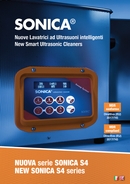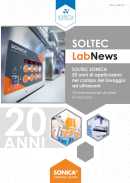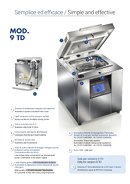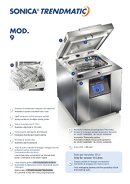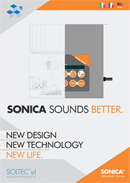Surgical instruments decontamination
Submitted by soltec-admin on Thu, 04/29/2010 - 14:54
in
SOLTEC’s flexibility in design and production goes hand in hand with important ongoing collaboration with major Italian and international research groups and institutions including the recent project with the Department of Environmental Science and Pharmacology of the University of Milan. Using SONICA®, equipment and a special cleaning fluid, an important research project into decontamination, cleaning and disinfecting surgical equipment has recently been undertaken.
Annals of Microbiology, 54 (2), 233-243 (2004)
A new methodology for decontamination of dental instruments by an ultrasonic cleaner based on Sweep System Technology
P. DI GENNARO1, G. BESTETTI1*, A. RADAELLI2,M. PAGANINI3, C. DE GIULI MORGHEN3, M. NERI3
1Department of Environmental Sciences, University of Milano-Bicocca, 20126 Milano; 2Department of Pharmacological Sciences, 3Department of Medical Pharmacology,University of Milan, 20129 Milano, Italy
Received 20 January 2004 / Accepted 25 February 2004
Abstract
The efficiency of a decontamination procedure by sonication for different dental instruments after experimental microbial and viral contamination was tested. Both germicidal and virucidal activity of sonication in the presence or absence of a cationic biobiguanid disinfectant was assessed following three different disinfection/sterilisation protocols. Dental instruments were contaminated with a mixed culture of Enterococcus faecium, Staphylococcus sp., Pseudomonas aeruginosa, Mycobacterium sp., Escherichia coli and Bacillus subtilis, or with Poliovirus type 1 and Herpesvirus simplex type 1 (HHV-1), exposed to ultrasonic treatment in an ultrasonic bath and the surviving microorganisms tiered. The results showed that an effective disinfection of dental instruments, expressed by an equal or higher than 4 logs microbial and viral reduction, can be obtained after 15 min or 10 min sonication in an ultrasonic cleaner equipped with a Sweep System Technology. Conversely, by the combined action of chemical disinfection and ultrasonic treatment in the same device, a sterilising effect was obtained after only 5 min for microbial and 10-15 min for virally contaminated instruments. The synergistic effect of chemical and physical means, as already accepted as an effective cleaning procedure of medical instruments, can therefore be applied to obtain a safe and effective sterilisation of dental instruments potentially contaminated by organic fluids and dental material harbouring pathogenic microbes and viruses.
Key words:disinfection, sterilisation, ultrasounds, dental instruments, ultrasonic cleaner.

